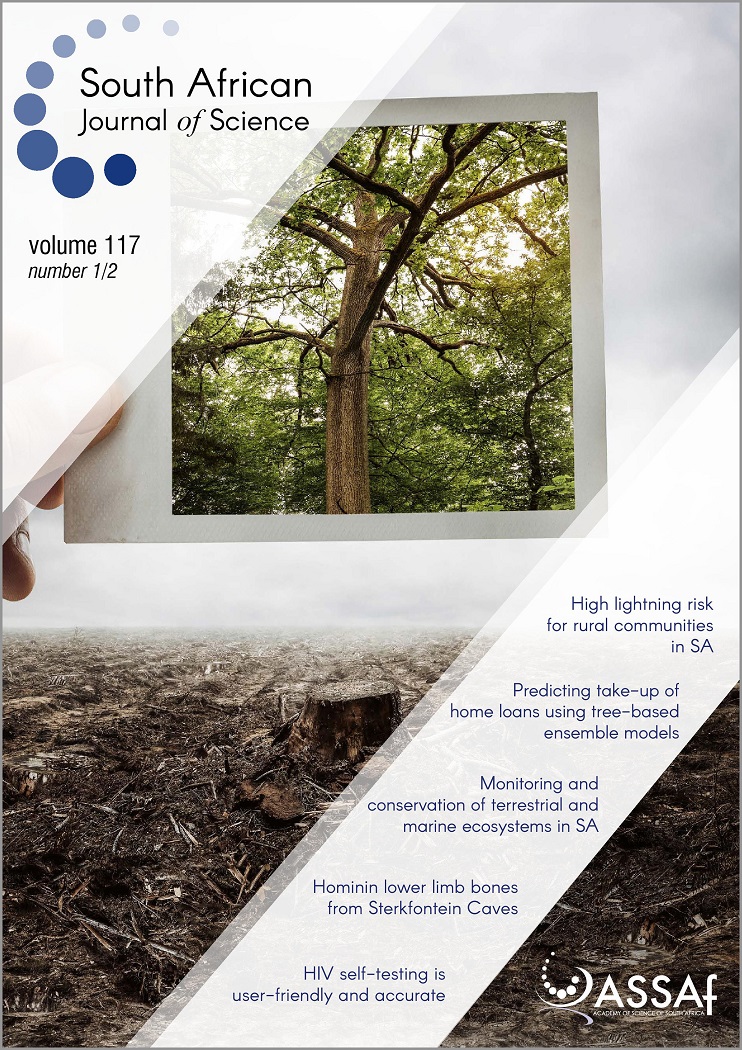Rates and patterns of habitat loss across South Africa’s vegetation biomes
DOI:
https://doi.org/10.17159/sajs.2021/8182Keywords:
land-cover change, monitoring, biodiversity, ecosystem, indicatorAbstract
The loss of natural habitat resulting from human activities is the principal driver of biodiversity loss in terrestrial ecosystems globally. Metrics of habitat loss are monitored at national and global scales using various remote sensing based land-cover change products. The metrics go on to inform reporting processes, biodiversity assessments, land-use decision-making and strategic planning in the environmental and conservation sector. We present key metrics of habitat loss across South Africa at national and biome levels for the first time. We discuss the spatial patterns and trends, and the implications and limitations of the metrics. Approximately 22% of the natural habitat of South Africa has been lost since the arrival of European settlers. The extent and the rate of habitat loss are not uniform across South Africa. The relatively mesic Grassland, Fynbos and Indian Ocean Coastal Belt biomes have lost the most habitat, while the arid Nama-Karoo, Succulent Karoo and Desert have lost the least. Rates of loss increased across all biomes in recent years (2014–2018), indicating that the historical drivers of change (i.e. expansion of croplands, human settlements, plantation forestry and mining) are intensifying overall. We should caution that the losses we report are conservative, because the land-cover change products do not capture degradation within natural ecosystems. Preventing widespread biodiversity losses and securing the benefits we derive from biodiversity requires slowing and preventing further habitat degradation and loss by using existing land-use planning and regulatory tools to their full potential.
Significance:
- The loss of natural habitat resulting from human activities is the principal driver of biodiversity loss in terrestrial ecosystems in South Africa.
- Monitoring trends and patterns of habitat loss at a national scale provides a basis for informed environmental decision-making and planning, thus equipping civil society and government to address habitat loss and protect biodiversity while also meeting key development and socio-economic needs.
Open data set:
Downloads
Published
Issue
Section
License

All articles are published under a Creative Commons Attribution 4.0 International Licence
Copyright is retained by the authors. Readers are welcome to reproduce, share and adapt the content without permission provided the source is attributed.
Disclaimer: The publisher and editors accept no responsibility for statements made by the authors
How to Cite
- Abstract 5416
- PDF 1651
- EPUB 196
- XML 253
- Supplementary Material 117
Metrics
Funding data
-
National Research Foundation
Grant numbers 118593













.png)